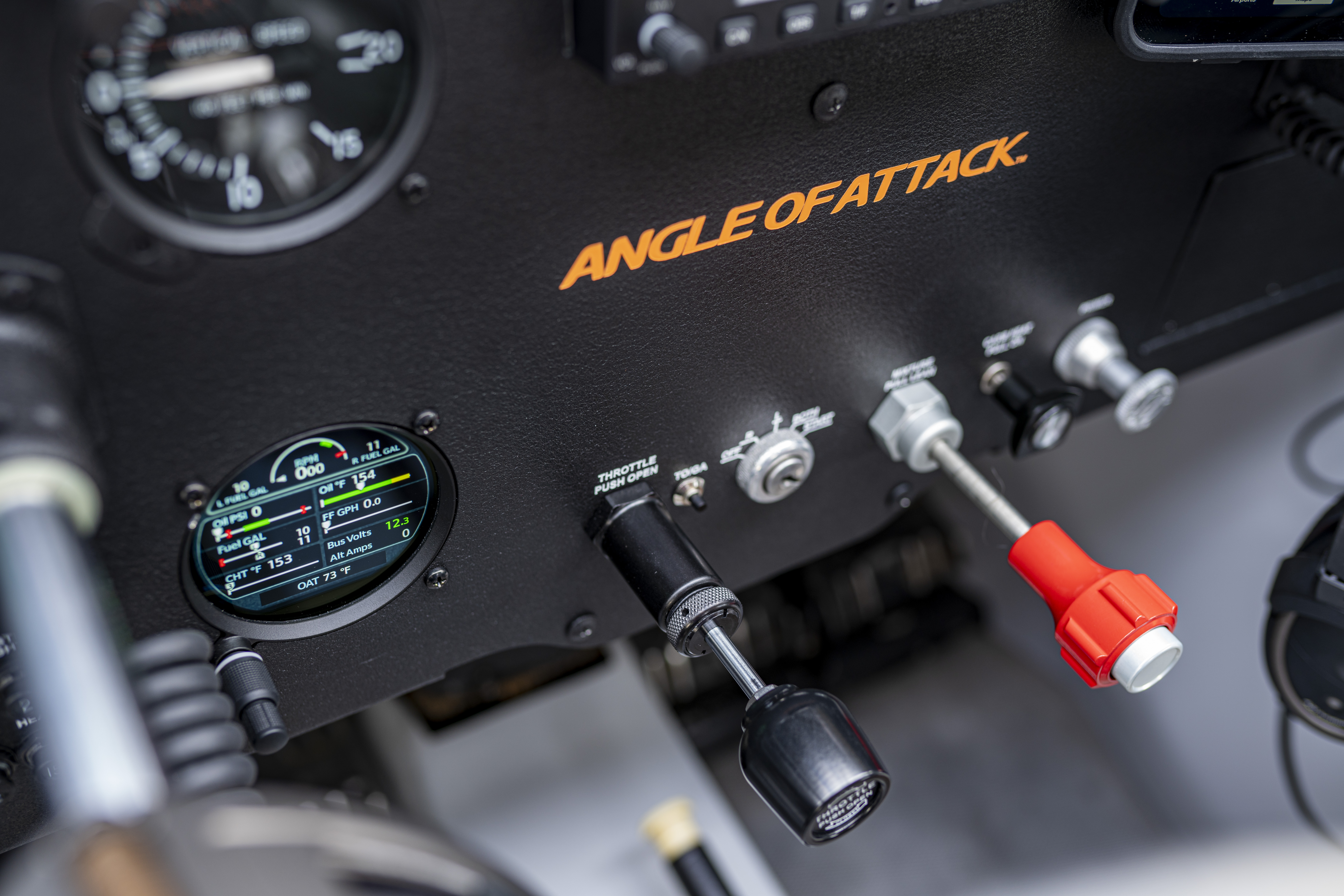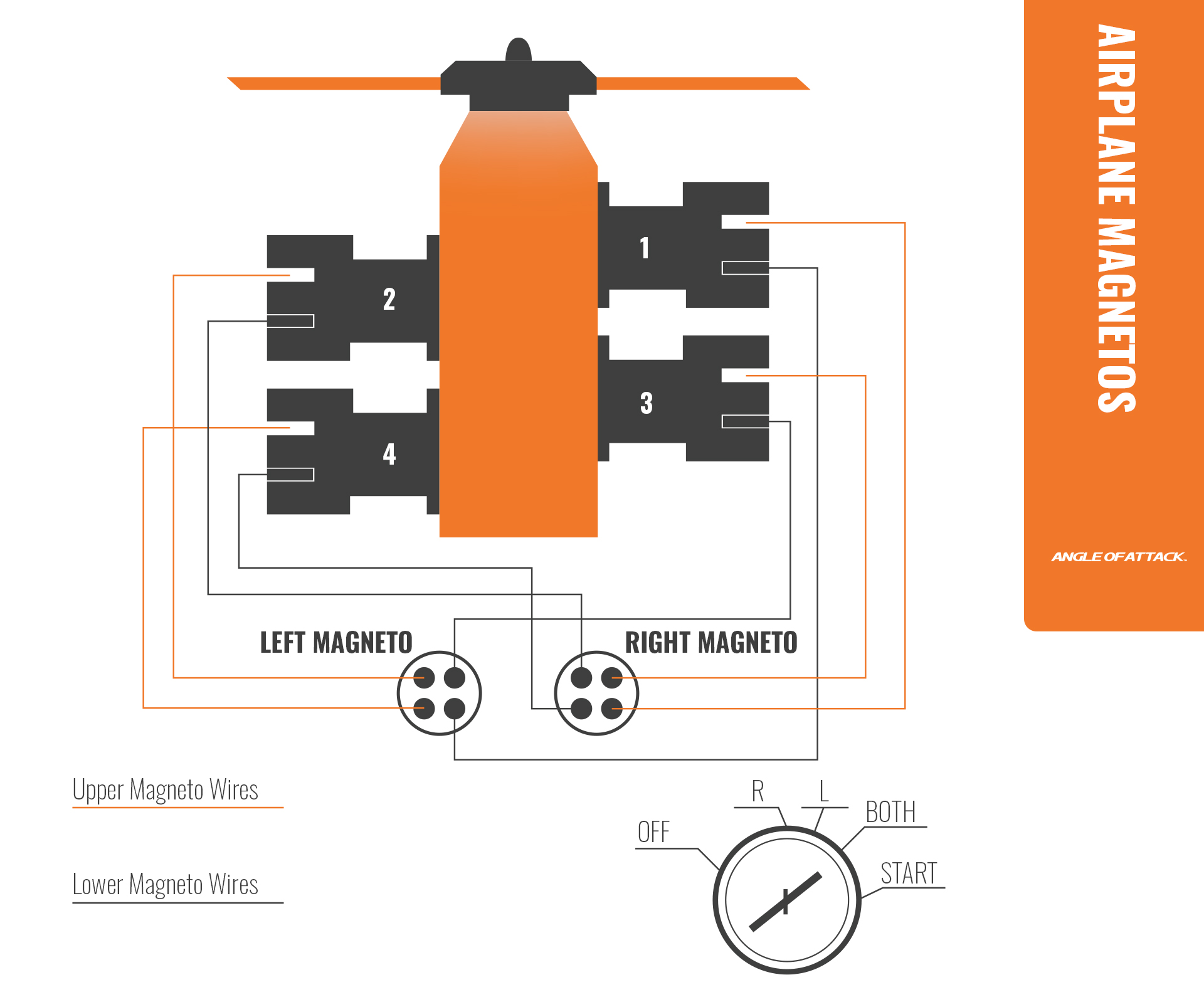
It’s more than just a villain of the X-Men… the magneto is a foundational piece of your airplane’s engine system. Understanding what the magnetos are doing in your airplane can help you be a better flier and maintainer of aircraft! Today we are going to discuss what is a magneto, why airplanes have two magnetos, and what you are doing when you check your mags in your run-up.
Let’s get into some shocking info!
What is a Magneto in an Airplane?
In simplest terms, a magneto is a generator of high voltage that provides ignition to an engine through spark plugs. Remember in the basics of any engine are the 4 strokes of the piston. To generate power in a stroke fuel in the engine must be ignited to create a small explosion. This is done via the spark plugs. But how do the spark plugs get their “spark?”
This is where the magneto comes in.
A magneto is a spinning magnet surrounded by coils. As the magnet spins, it generates a strong electrical current. Between the primary and secondary coils, the current can be up to 20,000-30,000 volts! The current is held back until a contact or breaker point opens connecting the electricity to the spark plug. The electricity then releases into the spark plug causing ignition. It does this for every piston cylinder in the airplane, thus generating power!
If you are having a hard time visualizing this, check out our Ground School options. Angle of Attack’s visual graphics are unmatched in the flight instruction industry. We will make sure you have a complete understanding of this important system.
 Why do Airplanes Have Two Magnetos?
Why do Airplanes Have Two Magnetos?
Magneto technology is some of the oldest in engineering. It well pre-date the advent of the airplane and was first used in tractors in the 1800s. The Wright Brothers even used a magneto which generated a whopping 10 volts.
They are still used in airplanes today because they are extremely effective. Additionally, magnetos are self-contained. This means although they are an “electrical” system if you experience an electrical failure (alternator/battery) the magneto is independent of that system. Thus the magneto, and subsequently your engine, will still run perfectly fine.
But why have two then?
Redundancy. An airplane could function with one magneto, but the magneto provides such a pivotal part of the engine we need two. Remember what the magneto does…gives the engine its explosive power. If a magneto failed without a backup, you would have no engine power whatsoever.
Two magnetos provide even more power. There are two spark plugs per cylinder. The left aircraft magneto fires one plug per cylinder, while the right aircraft magneto fires the other. This redundant system ensures that the ignition will keep sparking even if one magneto fails.
There has been a push to replace magnetos with a battery-type system. A major push behind this is the difficulty the magneto has in getting started. You know how you sometimes have a hard time starting your engine? You can thank, in part, the magneto system for that. Thankfully, electric starters have significantly helped solve this problem since its early days.
What Does the “Mag Check” do?
Timing is everything with magnetos. The spinning magnet in the magneto and the opening of the breaker point are actually timed with the rotation of the propeller’s crankshaft. The magneto must release its electricity at the exact right moment to generate a controlled explosion to line up with the piston reaching the top of the cylinder. It truly is a mechanical ballet.
Because of this complexity, it is vital to comply with “mag checks” on your run-up checklist. This is when you essentially turn off one to ensure the engine can still operate with only one running. When you switch to using just one, your RPMs will drop. Usually, your manufacturer will indicate an appropriate range of RPM drop. If your drop exceeds this amount, you should have your magneto checked and abort the flight.
The mag check is easy to skip. I’ve seen pilots do it. It takes time, is hard to tell what’s going on, and can end a flight for what seems like a lame reason. Do not skip this step. Magnetos, while simple on paper, are complex. The magnets over time lose their strength, the breaker points wear down, and oil can seep into the housing… all these issues can have disastrous effects. It’s important to have your magneto magnets thoroughly checked/replaced every 500 hours. It really should be checked every annual/100-hour inspection.
The magneto is just one important part of an overall complicated engine system. See our blogs on carburetor heat and mixture systems for more important engine information. As always, Angle of Attack’s Ground School is the primary source for understanding all engine systems. Our program will ensure you understand every shake, rattle, and roll coming from that engine! It’ll give you the confidence to hop in the airplane and know what’s going on.

Michael Brown grew up flying on the banks of the Tennessee River in Chattanooga, TN. He obtained his private pilot’s license in high school and has instrument and seaplane ratings. Michael graduated from Texas Christian University, where he founded the school’s flying club, with a double major in Business and Communications. He is currently a law student at Tulane University, studying transportation law. Michael was named the Richard Collins Young Writing Award winner and has had his legal writing recognized by the American Bar Association’s Air & Space Subcommittee. When he is not flying or studying, Michael enjoys riding his bike and cheering on his Atlanta Braves.

Stay Connected
Be the very first to get notified when we publish new flying videos, free lessons, and special offers on our courses.





